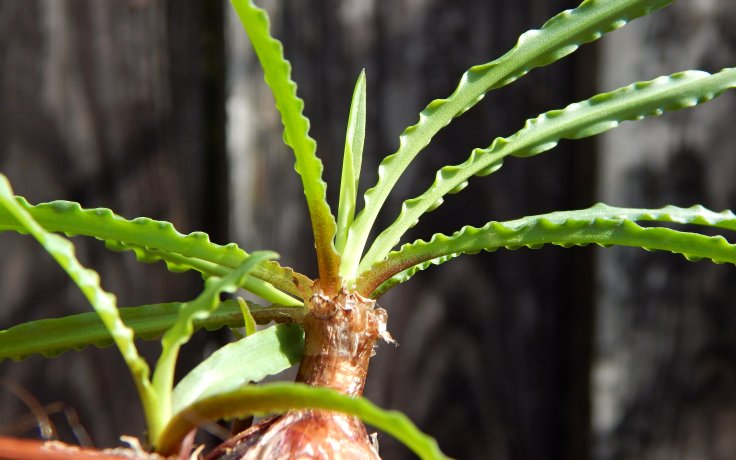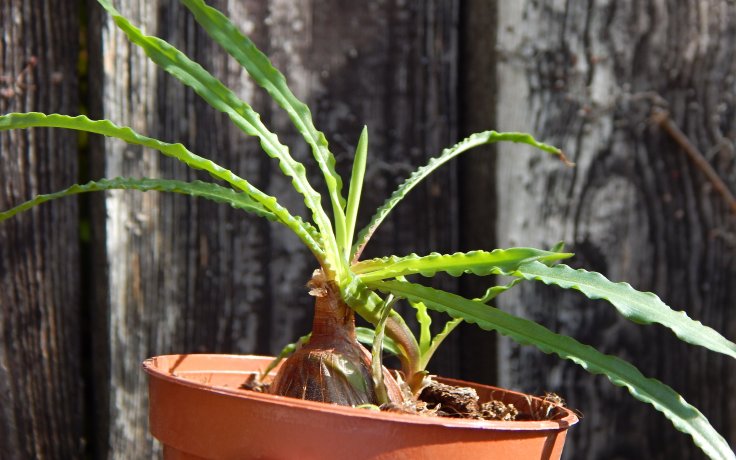- Home
- Succulents
- Ledebouria
- Ledebouria crispa





Ledebouria crispa
Place in a sunny position, but can tolerate partial shade.
Always water a few days after the substrate has dried out, but only during the growing season. If it has no leaves, do not water.
The plant is not hardy.
The plant is interesting mainly for its leaves. It waves a lot, creating a very curly to wrinkled effect. The Latin crispa even means curly.
Ledebouria crispa was described only in 1998. The genus name honours the botanist Prof. Carl Friedrich von Ledebour, who lived from 1785 to 1851. The name crispa , in turn, is Latin for curly, clearly referring to the leaves and their wavy edge. In the wild it grows on the rocky ridges of shale cliffs. It is found only in a few localities in the Limpopo province of South Africa and even here it is very rare.
The wavy leaves are a lush green colour. They grow up to 4 mm wide and up to 7 cm long and are very curved at the edges. They have fine stripes which give them a lively appearance and their irregularity adds to their curly appearance. The tuber grows to about 2 cm and has a weak papilla on its surface, from under which new rhizomes grow. Overall, the plant is rather minimalist in size.
In early summer the growing season arrives and with it the delicate pink flowers appear. Along with them, new leaves grow and the plant takes on a very lively appearance right from the start.
The succulent is easy to propagate both vegetatively and generatively. The leaves usually dry up for the winter and the plant survives the winter in leafless form. During the winter it is advisable to give the plant temperatures between 5 - 15 °C to prevent it from waking up prematurely. It is a beautifully curly miniature that will delight with its cheerful and lively appearance.